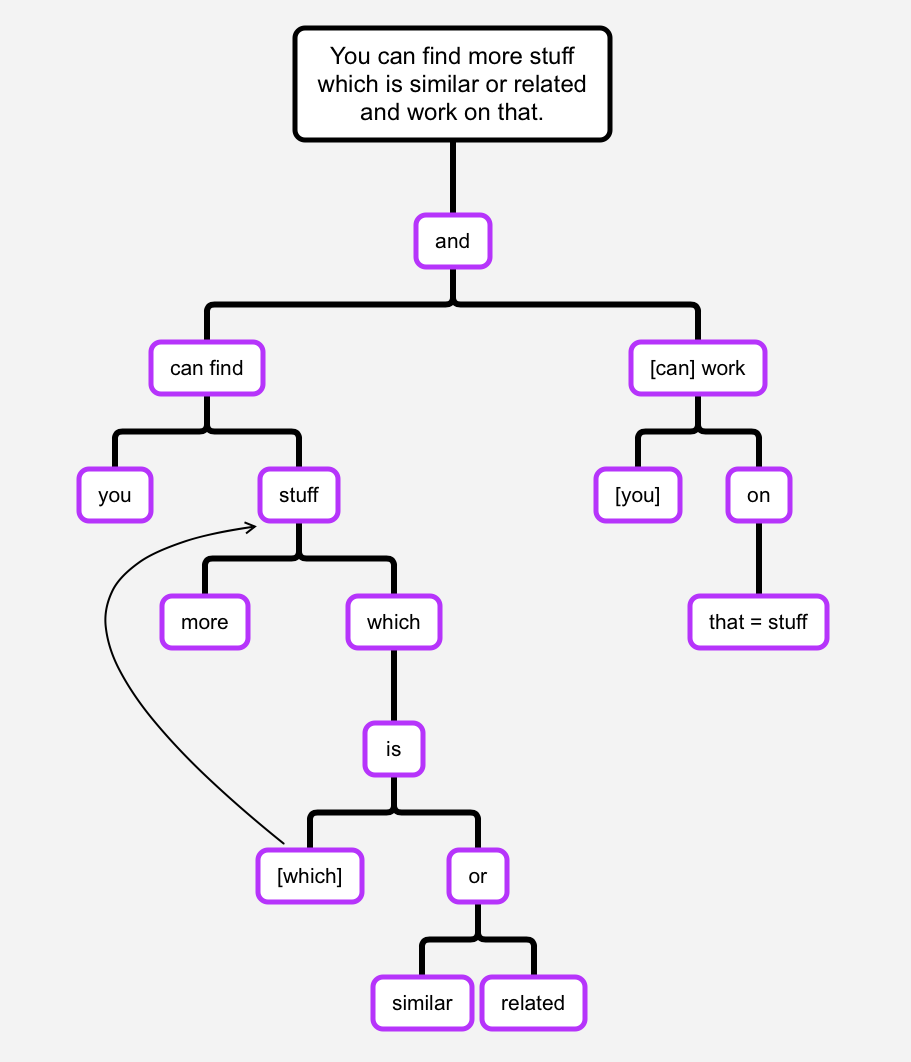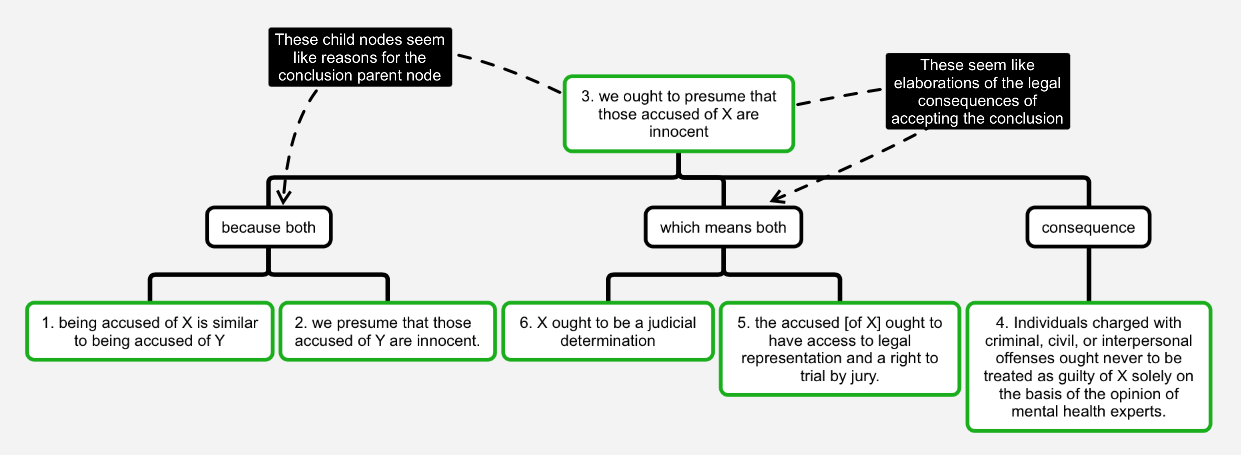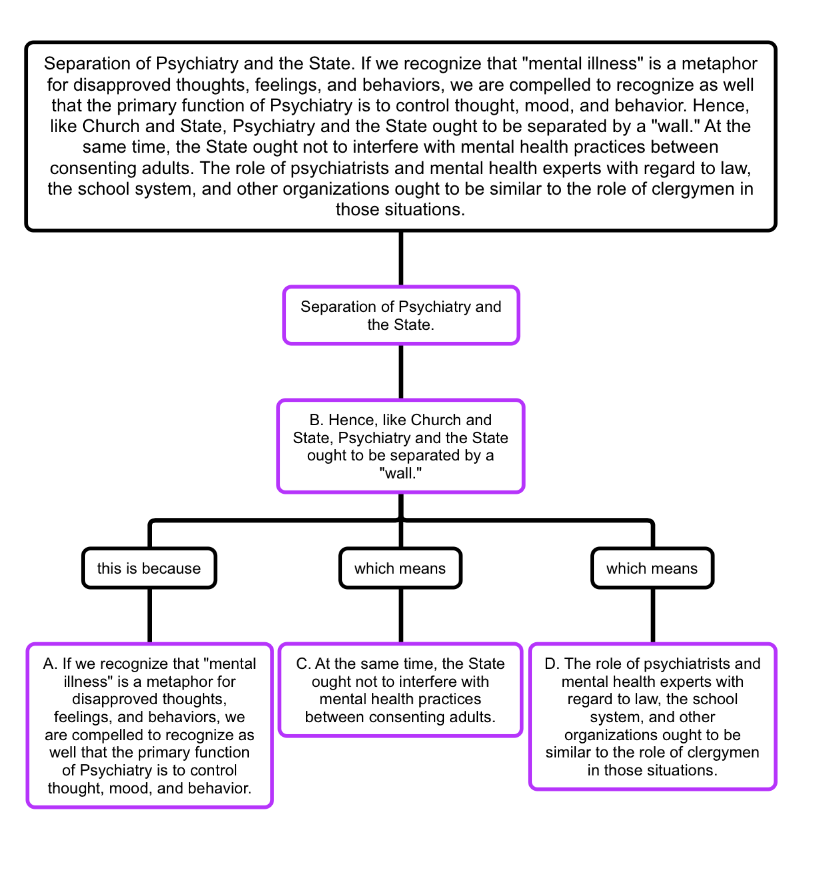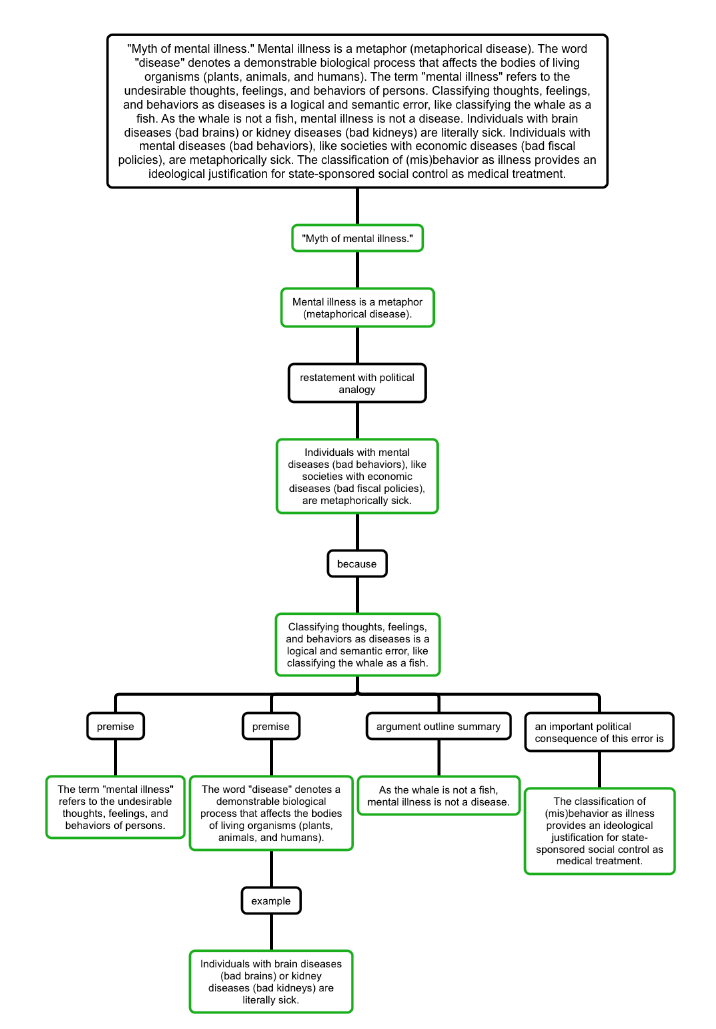I have skipped most of the exercises from the first two videos because I was familiar with/had done them already.
From Tutoring Max #2 at 1:57:15: Write down what you think overreaching is and how it works
I wanted to capture a casual recall. I wrote a quick paragraph off the top of my head with minimal editing.
Overreaching:
You are overreaching when the rate at which you are making errors exceeds the rate at which you can correct them. This can happen when you are trying to do things too far beyond your skill level. This is bad because it prevents you from learning from your failures because you do not have the context for understanding your mistakes, e.g they aren’t helpful to your learning. You might not even recognise that you are making errors. Doing things too hard for you can discourage you from continuing learning.
In the following I compare to ET’s tree in Tutoring Max #3 @ 57:29:
Sentence 1
Me:
You are overreaching when the rate at which you are making errors exceeds the rate at which you can correct them.
ET has:
When the error rate is significantly above the error correction rate, then errors build up and up.
Good but ET says an error rate that is significantly above the error correction rate. So when is it significantly above? It seems like any error rate that exceeded the correction rate would have the same consequence of potentially unbounded error accumulation.
Is it that, if your error rate is just a bit above, you may still be able to understand some of the errors? In that case they will still accumulate if you don’t course correct, but you might still understand a lot of them. If your error rate is significantly above; you’ll likely not even notice the majority of your errors, let alone be able to understand them.
Sentence 2
Me:
This can happen when you are trying to do things too far beyond your skill level.
ET has:
People do stuff that’s too complex and “sophisticated” and “clever”.
I guess if ‘complex’ etc. stuff means complex relative to your current skill level then it’s almost the same idea. I think the spirit of ET’s point here though is stuff that is socially percieved to be complex, ‘sophisticated’ and ‘clever’. Not just stuff that, given ones current knowledge, is objectively more complex.
Sentence 3
Me:
This is bad because it prevents you from learning from your failures because you do not have the context for understanding your mistakes, e.g they aren’t helpful to your learning.
ET didn’t put a node in his tree that has a direct parallel to this. Also, I think what I wrote could definitely be improved.
Sentence 4
Me:
You might not even recognise that you are making errors.
ET has:
They fail a lot and don’t realise it.
Cool.
Sentence 5
Me:
Doing things too hard for you can discourage you from continuing learning.
There isn’t one of ET’s quite like this. The closest might be:
This leads to people lowering their standards. They accept non-solutions as solutions.
I’m pretty happy with how I did. I thought I would miss a lot more key features of the concept. I don’t think that I got anything majorly wrong.








